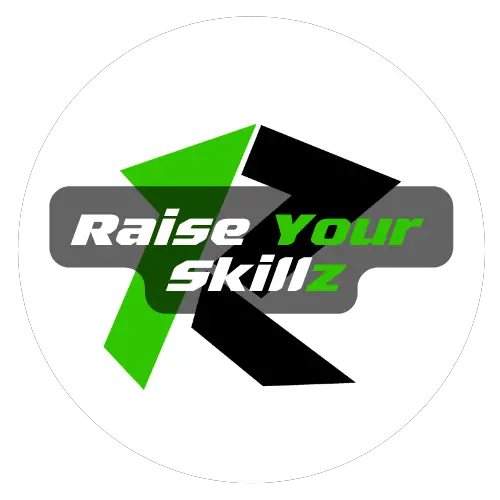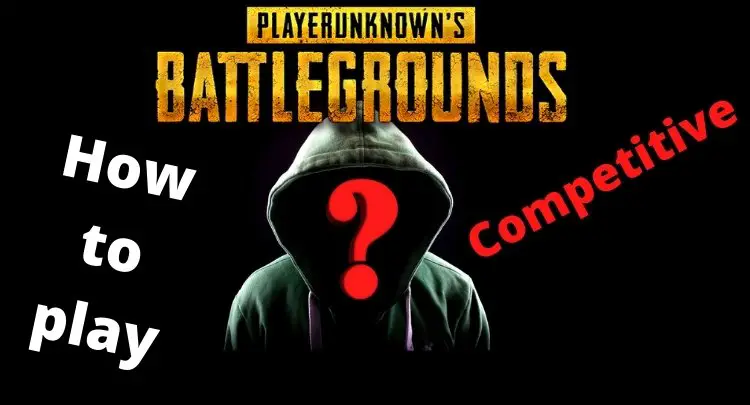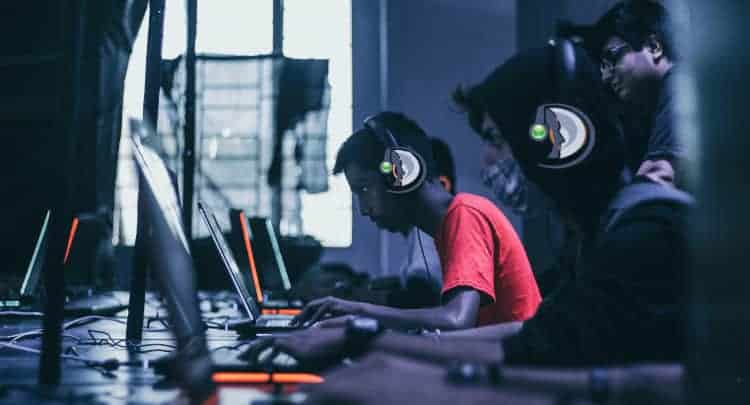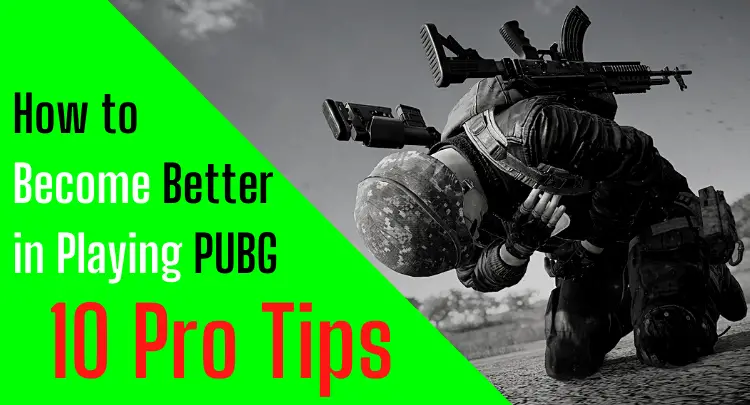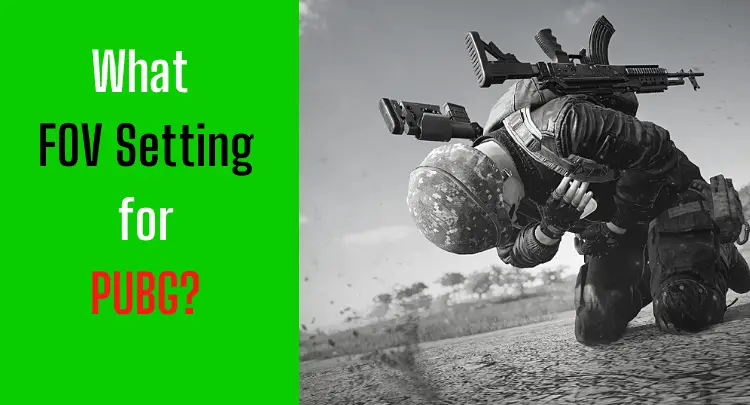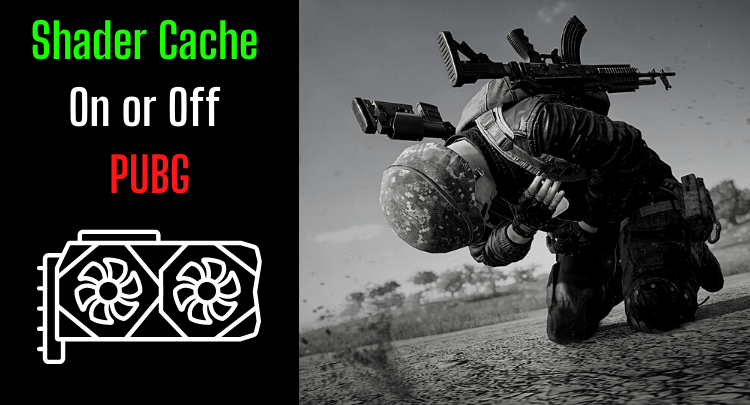This post will give you a comprehensive overview of all the topics that will help you play PUBG competitively. Competitive PUBG differs primarily only in details from the public or ranked mode. One exception is an essential difference between competitive PUBG compared to public and ranked mode.
Competitive PUBG is different in one way. You have less room to play. Most teams avoid fighting in the early stages and only fight when there are no more playable positions available without fighting. This strategy leads to a high number of players in the late zones. If you want to be in a good position, you need speed, map knowledge, and opponents’ information.
You’ve been playing PUBG for a while now and have already accumulated a considerable amount of hours played, but you’re getting bored of always playing ranked or public? Then maybe you are looking for the thrill and competition in the competitive scene of PUBG and want to play big tournaments and compete with the best PUBG players in the future.
The detailed differences between competitive and regular PUBG and how you should deal with them will be explained in this article so that you can successfully enter the competitive scene.
You are a strong player and tear up every lobby on public servers, maybe even in ranked mode, and think you will win every tournament now? Unfortunately, I have to disappoint you. Competitive PUBG is very different from regular PUBG. You’ll quickly find that you often can’t show your qualities at all but die while rotating without firing a shot or just getting farmed because it seems like there are opponents everywhere. You can’t find a position to play anymore.
But don’t get me wrong, competitive PUBG is the real PUBG, and for people like me who love competition, it’s a lot of fun and the reason I now have 6.000+ hours of play in this game. PUBG is the epitome of a tactical shooter where you can only really achieve something with team play.
Note: This article was written in English. Translations into other languages may not provide the same linguistic quality. We apologize for grammatical and semantic errors.
How to Find a Team
To play competitive PUBG, you need a team of four players. If you already have a few hours of gameplay under your belt, you probably know other players who want to start a team or are already competitive players. But if you still need players, then I recommend looking for them via Discord. Almost every major PUBG Discord server (from big streamers, communities, existing leagues, known teams) has a #recruitment channel or similar, where you can quickly get in touch with players.
Of course, existing teams are also looking for new players in such channels, where you can also apply.
It is more difficult to find the right people for your team, but unfortunately, only trying help.
A little advice from me, look for people with whom you like to spend time because a real team spends so much time together that if you do not get along well, the team can quickly break apart, especially if it does not run so successfully are always setbacks.
You should also make sure that all team members have the same goals. A team will quickly break apart if one half wants to train 24/7 to become a pro gamer, and the other half sees it as a hobby among many, where you just want to play a little bit.
Depending on how much time all team members can or want to spend on training, having a 5th or 6th player to ensure regular training can also make sense.
I assume that every player needs a working headset because communication is crucial in a team game. You should use Teamspeak for communication, but if necessary, Discord is also ok. You can read our article about this:
What Are the Roles in a Team?
You have four players together, and now you want to start. PUBG is a tactical shooter and thrives on team play. Specific roles have been established in teams for this to work, whereby a player can also hold several roles.
In-game leader (IGL): The IGL is probably the most important role in many teams. He is perhaps comparable to the quarterback in football. The IGL tells where to go, how to rotate, and what fights to take. In addition, the IGL is often the most experienced player with excellent map knowledge and a lot of knowledge about zone shifts, especially in the late stages.
Co-IGL: The Co-IGL supports the IGL in making tactical decisions and tries to help when the IGL runs out of ideas.
Shotcaller: In many teams, a so-called shot-caller is there exclusively to announce which fight you will fight next as a team. These are often strong fraggers who have a good sense of the terrain and can quickly tell if an opposing team is good to attack at the moment. Similar to the Co-IGL, a shot-caller takes the pressure off the IGL.
Fragger: Of course, there is also the classic fragger. His only job is to generate kills, and he fights on the front line.
Supporter: In contrast to the fragger, the supporter often stands a bit further back, keeps the overview, calls where the opponents are, and covers the team.
Scout: The scout is a specialist in exploring unknown terrain. He knows all the good positions to scout and is the spearhead of the team. Usually, there should be more than one scout to “jump over” each other. One keeps an eye on the next scouting position, while the second one goes there and scouts from there again while the first scout follows and goes to the position that has already been scouted.
The more experienced the team, the more the roles become blurred. While in an inexperienced squad, the IGL has to tell everyone what to do all the time. In an experienced team, the IGL only has to give the rough direction, and everyone else knows what to do. Likewise, each team member should have a certain questioning power and be able to scout. Still, especially with inexperienced teams, the precise distribution of roles brings structure to the whole thing and can be very helpful.
Honest recommendation: You have the skill, but your mouse doesn't support your aiming perfectly? Never struggle with your mouse grip again. Masakari and most pros rely on the Logitech G Pro X Superlight. See for yourself with this honest review written by Masakari or check out the technical details on Amazon right now. A gaming mouse that fits you makes a significant difference!
What Changes to the Settings in Competitive?
Currently, only the maps Miramar and Erangel are played in tournaments.
All other maps are either too small or not suitable for competitive PUBG for other reasons (e.g., too confusing, so it depends too much on luck and chance, which you want to avoid in esports, of course). Typically, 16 teams compete against each other, just like in ranked mode.
However, there are some differences in the server settings compared to public servers. You won’t find some items or vehicles introduced specifically for public servers in competitive, such as C4, the dirt bike, or the glider.
Hardspawns
On the one hand, there are more vehicles on the map due to the so-called hardspawns, which are vehicles (including boats, by the way) that always spawn in the same place in every match. On the other hand, you will often experience that a fight between different teams arises at the beginning of a competitive match, namely who is faster at the hardspawn. Mobility is critical in competitive PUBG, but I’ll get to that later.
Loot
On public servers, you often have to loot for a long time to get a halfway decent amount of equipment, and the lootspots are very different in terms of the amount of loot.
In competitive PUBG, of course, you want to ensure that all teams have roughly equal opportunities so that the loot is significantly increased and everyone has the chance to get good gear quickly.
In ranked mode, you may have already noticed that the loot settings are much better, but in Competitive PUBG, they’re stepping it up a notch.
Zones
If you have already played the ranked mode, you will know that the zones behave quite differently from public servers. For example, you can say that the zones start moving faster (wait time shorter) but contract slower (move time higher), and the blue zone generally does more damage (higher DPS). You can see the current esports settings in the table below.
| Circle Number | Delay | Wait | Move | DPS | Shrink | Spread | Land Ratio |
| 1 | 90 | 240 | 270 | 0,6 | 0,35 | 0,5 | 0 |
| 2 | 0 | 90 | 120 | 0,8 | 0,55 | 0,56 | 0 |
| 3 | 0 | 60 | 120 | 1 | 0,6 | 0,56 | 0 |
| 4 | 0 | 60 | 120 | 3 | 0,6 | 0,56 | 1 |
| 5 | 0 | 60 | 120 | 5 | 0,65 | 0,56 | 0 |
| 6 | 0 | 60 | 120 | 8 | 0,65 | 0,56 | 0 |
| 7 | 0 | 60 | 90 | 10 | 0,65 | 0,56 | 0 |
| 8 | 0 | 60 | 60 | 14 | 0,7 | 0,56 | 1 |
| 9 | 0 | 10 | 160 | 18 | 0,001 | 10 | 0 |
One of the most exciting differences to public settings is the land ratio settings of zones 4 and 8. When the 3rd zone shifts to the 4th one, all the water area falls out of the zone if possible. If there is still water in the zone when shifting from zone 7 to zone 8, the last water area will fall out of the zone at the latest.
Therefore, these shifts are also called water shifts and allowed the teams to foresee the shifts in a certain way and adjust their rotations. Of course, the 1st water shift plays a significant role.
What Kind of Tournaments Exists?
You have your team together and want to get started, but how? Playing ranked mode in a team can promote team play, but it is not comparable to a real competitive lobby.
First, you should find out about so-called scrims in your region. These are training tournaments organized on Discord servers. Some of them are invite-only, but there are usually also open scrims where new teams can join. You can train under competitive conditions at scrims and improve your rotations, scouting and fight skills, breaches, etc.
Then, when you feel ready for an actual tournament, there are several options.
- Some streamers regularly organize small tournaments with small prizes. Usually, the level is not that high because there are also many casual players playing, a good experience for your team, and you can get some confidence.
- Daily regional tournaments like the GLL Daily in the European region (https://play.gll.gg/pubg/tournaments), where the level is very high, sometimes even pro teams (Team Liquid, Faze, Omaken, etc.) play. Here you can win little prize money every day.
- There are regional championships where you first have to pass some qualifiers and then play in a league weekly. Usually, there is a final at the end (offline or online). The prize money is higher, and the competition is very strong, at least in the finals.
- Last but not least, there are, of course, big international events like the PGI, which the PUBG Corporation itself organizes. Here, the big pro teams play for a lot of money and prestige.
Interesting is that, in theory, you can at least register or qualify for all these tournaments, even for the huge events. There are usually qualifiers, even if the chance to prevail as a NoName team is low, but highly recommended to gain experience at a high level.
Remember to read each tournament’s rules because there is usually only a particular registration phase, and then a check-in must be done shortly before and such things. Also, you typically have to provide your in-game nickname, which has to be 100% correct.
If you plan to stream such tournaments, you also have to check the respective rules carefully. Most of the time, a delay (at big tournaments, often even 15 minutes) is prescribed, or sometimes even streaming is prohibited entirely. Disregarding these rules usually leads to disqualification, so be careful and read carefully.
Time for a fun break with Masakari in Action? Press “play”, and have fun!
What Does the Scoring in a Tournament Look Like?
In a tournament, you get points for both survival (placement points) and kills. It’s up to you whether you prefer to play for kills or placement. From my experience, I can say that if you survive for a long time, you will usually make kills, at least if you use your chances later in the game. On the other hand, if you try to force kills in the early stages of the game, you can ruin the whole game by losing your players early and losing time so that the zone’s best positions will already be occupied.
| Placement | Points |
| 1 | 10 |
| 2 | 6 |
| 3 | 5 |
| 4 | 4 |
| 5 | 3 |
| 6 | 2 |
| 7 | 1 |
| 8 | 1 |
| 9-16 | 0 |
| Kills | 1 |
How to Play a Competitive Match in PUBG
Before the Match
You play scrims or a tournament with your team—registration, check-in, etc., you have done everything. Now you have to connect individually with the server data. Under Custom Games and then Esports Mode, your server should appear, and with the correct password, you can join.
You can get the server data in Discord (e.g., at Scrims) or on the respective tournament organizer’s website. You will also be assigned a slot for your team, which you must use in all matches. This is important for the scoring. Be on time, everyone on the server, because there will be no waiting for you. If you have technical problems, you can usually tell an admin in Discord, and he will give you a few extra minutes if you are lucky 😉
The Initial Phase of a Match (Zone 1-3)
Now it starts. The match begins, the plane flies. But where do you jump? First, there are two possibilities for how to select your lootspot.
Either you simply set your lootspot, or you watch where the opposing teams jump out of the plane, and if you see that a city or an area is free, you jump there yourself. This is called a reaction jump.
I would recommend that you choose a fixed lootspot. This has several advantages. First, everyone knows what to do, where the vehicles are, how to effectively and quickly loot the place, etc., and what is even more important, after some time, the rotation paths are crystal clear for the entire team because you always drive the same paths. Second, this brings a lot of security, especially for a new team.
The thing has only one drawback. Of course, it can be that another team also there wants to loot. Then you have to decide whether to take the early fight and risk losing a lot of time and players or to dodge by jumping on vehicles and quickly driving to another lootspot. At some lootspots like Los Leones on Miramar, several teams can loot without fighting, but you never know how the opponent thinks, and the danger of a confrontation always exists.
In the long run, I would advise you to fight for your lootspot because if your team is in the competitive scene for a longer time, eventually everyone knows that this is your lootspot and usually avoids the confrontation. A good team won´t take an early fight every round. In a tournament, most teams will only contest your lootspot once if you can win the contest.
To win a contest, it’s always best to bully your opponent and have more shooting angles than the opposing team, but make sure you can still support each other if a player gets into trouble. It’s best to think of tactics specifically for your lootspot.
Let’s assume you are the only team at your lootspot. The first step is to secure vehicles because even if no other team loots directly from you, you will often have neighbors who try to snatch the cars away. Mobility is essential in PUBG, and usually, you want to have four vehicles available, at least in the beginning. Therefore, you should also have players in the team who fly directly to the hardspawns and secure them.
By the way, you can see where the hardspawns can be found and where random spawns for the vehicles are everywhere here:
https://pubgmap.io/de/erangel.html?/v2/30/4m3r3k/BLeG
It is essential always to keep an eye on the surroundings when approaching your lootspot. Do we have a contest? Is someone approaching my car? (Here, the team members should also help each other, because you often overlook an opponent if he flies directly above or below you) How many teams are present in the area, and where? Information makes the difference between success and failure in PUBG, so always keep your eyes open.
When looting, each player should have their set routine of houses that they loot. Of course, team members should also help each other when looting. Everyone has their basic equipment together as quickly as possible because the time factor is very important. Looting 5 seconds longer can prevent you from getting the best position in the zone.
You need the following loot, and then you can start:
- AR
- DMR/SR
- Short distance and ranged combat (min. 4x) Scope
- At least some weapon attachments to reduce recoil
- Ammo
- Smoke grenades (min. 3) to smoke knocked teammates and generally as cover
- Heal Stuff
- Vest and helmet (level 2)
Normally, you should only take one type of ammunition with you for space reasons, so AR and DMR/SR will usually be looted with the same kind of ammo. Besides, only one SR per team is usually played because with DMRs, you can better put whole teams under pressure, and flush knocked players at long range is much easier.
However, having a good SR in the team is often worth its weight in gold for the entry knock in a fight.
Any other loot, like different grenades and molotovs or complete attachments, etc., are nice to have but not mandatory, and the search for them should not delay the first rotation.
Equipped and with vehicles, it goes into the first rotations. In the early zones, all teams still have a lot of space to play, and with consistent scouting, you should always be able to reach good positions centrally in the zone (depending on how far away the first zone is for you).
The important thing here is not to engage in unnecessary fights in the first zones because you want to get into good positions. Only if you are in a good position at the end of the third zone, when the water shift comes, a good game with potential chicken dinners is possible at all. (There are always exceptions, but usually only with a lot of luck, and you should not count on it) Remember that vehicles offer you an option, so always ensure that the vehicles are safe and can not be destroyed by enemies.
The Middle Phase of a Match (Zone 4-6)
From zone 4 at the latest, things get tight. In strong lobbies, there are usually more than 50 players still alive at this point. This means that if you are not in a good position now, you have to risk something, either attack with a breach or do a broad rotation to a place where you can probably still play. Even risky sending moves into the center of the zone, for example, to a single shack, are conceivable.
Either way, now is the time when as a full team, you don’t necessarily want to be in the center of the zone (except maybe in a great compound where you see a lot). Instead, you want to be at the edge of the zone, keeping opposing teams out of the zone and taking easy kills as opponents have the already very painful zone at their back and need to move.
At this stage, our vehicles are often our last resort. However, they provide mobility and cover, as in an emergency, you can make almost any position playable by circling the wagons, shooting out the cars’ tires, and entrenching yourself behind the cover.
Also, smoke grenades as cover often become essential for survival in this phase and give you a breather even in tremendous stress. You should, therefore, always remember to replenish your utility with lootable killed enemies if possible because, from many situations, only vehicles and smoke grenades lead out, usually also in combination.
At some point in this middle phase, you will reach the placement points, and from then on, you should think carefully about when to act aggressively and simply wait for more teams to be eliminated and thus score additional easy points. For this (also of already dead team members), the killfeed should be watched closely.
If your team is still without losses, you should, of course, act more dominantly and play to win. However, if only two of you left or even only one, it is often worth doing the so-called snake tactic. This means you just lie in the grass and only intervene in the fights at the very end when you have to. As a snake, you can still do surprisingly well or even win a game.
Late Game (Zone 6+)
The final battle begins, and only a few often decimated teams are left in the game. Vehicles are now only applicable as cover. Rotations no longer occur, and you have to play the terrain that presents itself in the best possible way and win the fights.
Now it’s all about your aiming and movement and playing smart.
If you make it to the last zone and the so-called star appears in the middle of the zone, it’s once again time for the massive use of smoke grenades, because often the terrain is very open and you have to move, so create as much cover as possible for yourself with the Smokes.
After the Game
It goes to the error analysis after the scrims, tournament, or whatever you have just played. You should look at your mistakes in your replays again.
Also, the whole team should analyze the games together. The best way to do this is for the IGL to open a Discord group and go through the replays with everyone via screen transmission. For rotations etc., it is also a good idea to watch the matches again in 2D. For this, you can use https://pubg.sh/. Just enter your nickname and call up the last matches.
If you don’t see your mistakes yourself because you lack experience, just ask an experienced player for help. Many in the PUBG Competitive scene are happy to assist.
Overview: How to Successfully Play Competitive PUBG
In summary, I would want to highlight the following points when it comes to successfully playing competitive PUBG:
- Team play and good team composition: The atmosphere must be reasonable and, above all, communication must work, even in the greatest stress
- Mobility: Always secure vehicles and thus remain mobile and have options
- Scouting: only with information can you make good decisions, so scouting is crucial. Otherwise, you play on luck, and that will not go well in the long run.
- Good rotations: Really good rotations are precise (with enough experience, you really often travel the exact same route) and executed together as a team (one target is easier to take out than four targets moving together).
- Overview: Processing the information that you and your teammates are constantly gathering and thus keeping track of it all
- Experience: Play, play, play, and don’t forget to analyze your own mistakes
- Individual skill: Of course aiming etc., is essential, especially from a certain level.
One more little tip at the end! Always pay attention to the latest patches because these can sometimes have a tremendous impact on the game’s meta; for example, the Beryl as a close-range weapon is currently powerful. No one played it a year ago, so I always read the patch notes. And now into the battle! 😉
Related Guide:
If you have a question about the post or pro gaming in general, just write to us: contact@raiseyourskillz.com
If you want to get more exciting information about becoming a pro gamer and what relates to pro gaming, subscribe to our newsletter here.
Masakari – moep, moep and out!
